This is the 31st in a series of posts on the Fujifilm GFX-50S. The series starts here.
Since the GFX came out, there has been much ‘net discussion as to whether there are any quality improvements over the best full frame (FF) cameras with the best glass. Those discussions usually ignore the fact that the best FF glass of normal to long focal length works just fine on the GFX at aspect ratios of 4:5 or squarer. Nevertheless, it seems like a comparison of the Fuji 63mm f/2.8 lens on the GFX to the Otus 55 mm f/1.4 on the Sony a7RII might be instructive.
So that’s what I’m going to do today.
Sorta. I’m doing a very limited comparison. On-axis only, and for three parameters: resolution, longitudinal chromatic aberration (LoCA), and focus shift.
I’m using a variant of the protocol described here. The subject distance was 6 feet, which is about as far back as I can get with these lenses on these cameras. I tested at the lenses best apertures, which in the case of the Otus are f/2.8 through f/5.6, and in the case of the Fuji 63 are one stop down from there. That’s convenient, since because of the larger sensor, the equivalent f-stops on the Fuji are one stop down from a given f-stop on a FF camera. I lost a fight with MTF Mapper, and am only able to show you the red and green raw channels today. The blue ones are AWOL, and I don’t know why at the moment.
At the widest apertures tested:
The right side of the screen has the camera closer to the subject than the left. First off, note that the depth of field (DOF) of the two camera/lens combinations is about the same. You can see that the Fuji lens on the GFX is sharper than the Otus on the a7RII. We have already seen that the Otus on the GFX is only marginally sharper in the middle than the Fuji 63; that’s because both lenses can lay down details in the center of the image that the sensor can’t pick up. Also not, surprisingly, that the LoCA is about the same for both lenses. That’s because we can’t wee the blue channel here. We have seen that the blue channel in the Fuji 63 has about the shift of the red channel, while the blue channel in the Otus is pretty much on top of the green channel.
Stopping both lenses down a stop:
The Fuji is marginally sharper.
At the narrowest stops tested:
Looking at focus shift:
The focus shift on the Fuji lens is worse. Best to focus the 63 at the taking aperture. But that’s true of the Otus, too, just to a lesser degree.
My conclusion from this test is that the differences in central image quality between the two camera systems is small enough to be unimportant in normal photography. When you think about the price difference between the Otus and the Fuji 63, that’s a bit surprising. We have seen elsewhere that there is little difference between the photographic dynamic range of the two cameras. And, of course, the Otus has qualities that this test does not address.
But, as I pointed out above, the Otus is quite happy on the GFX, if you crop to 4:5 or squarer.
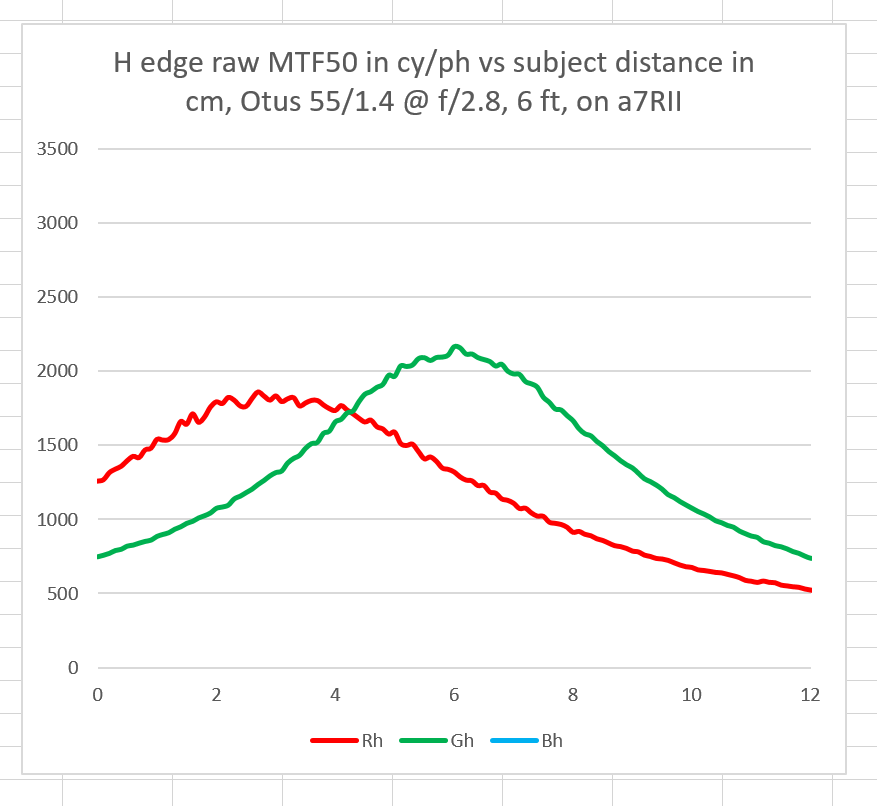
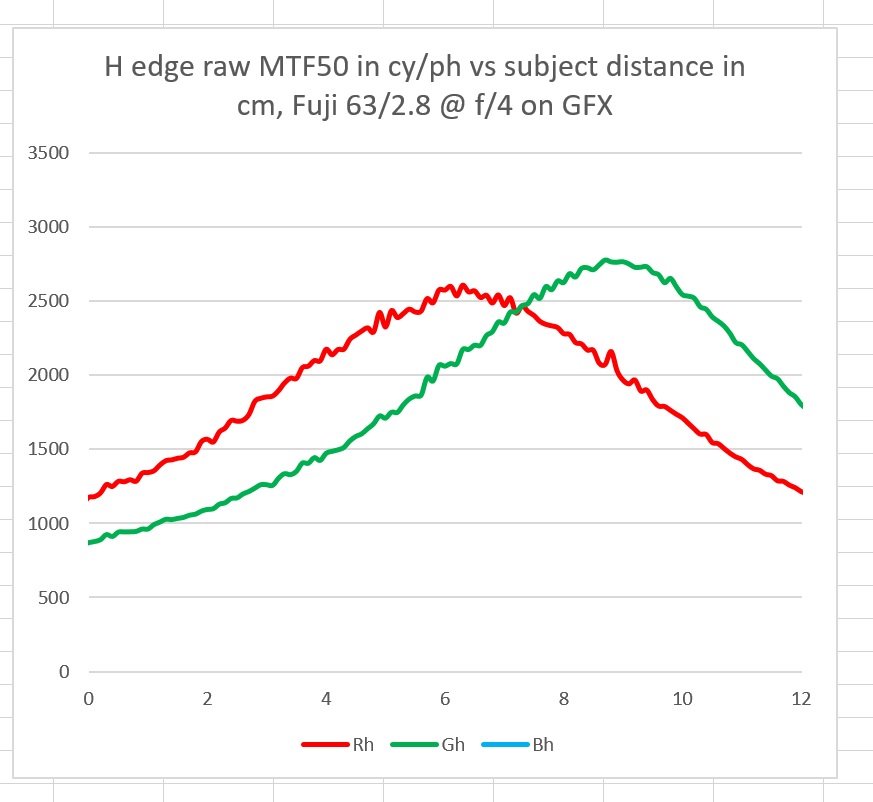
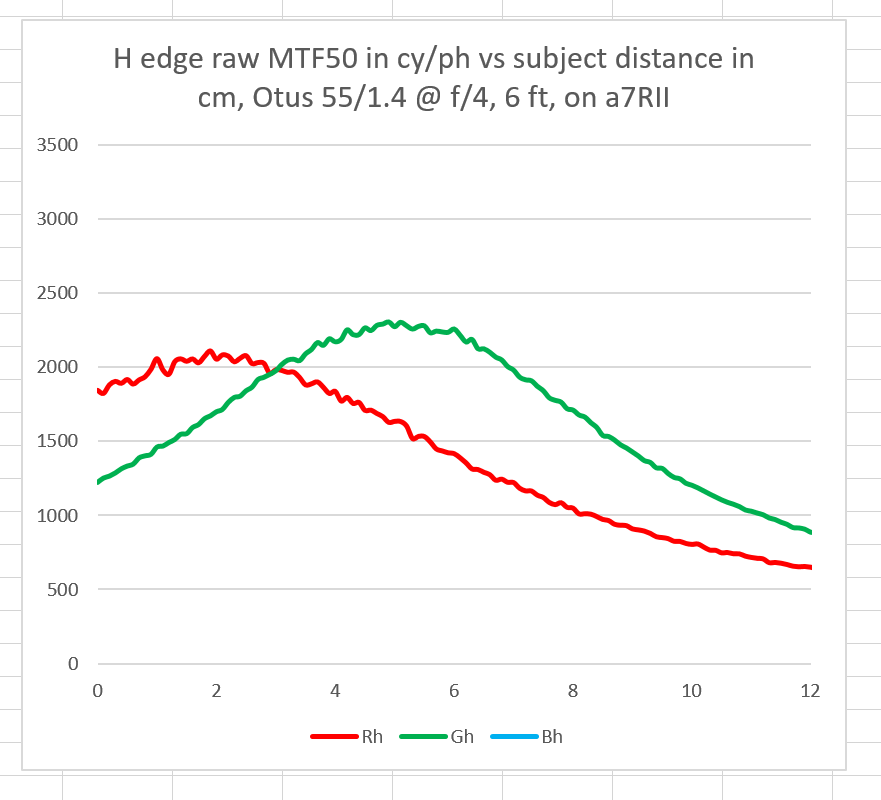
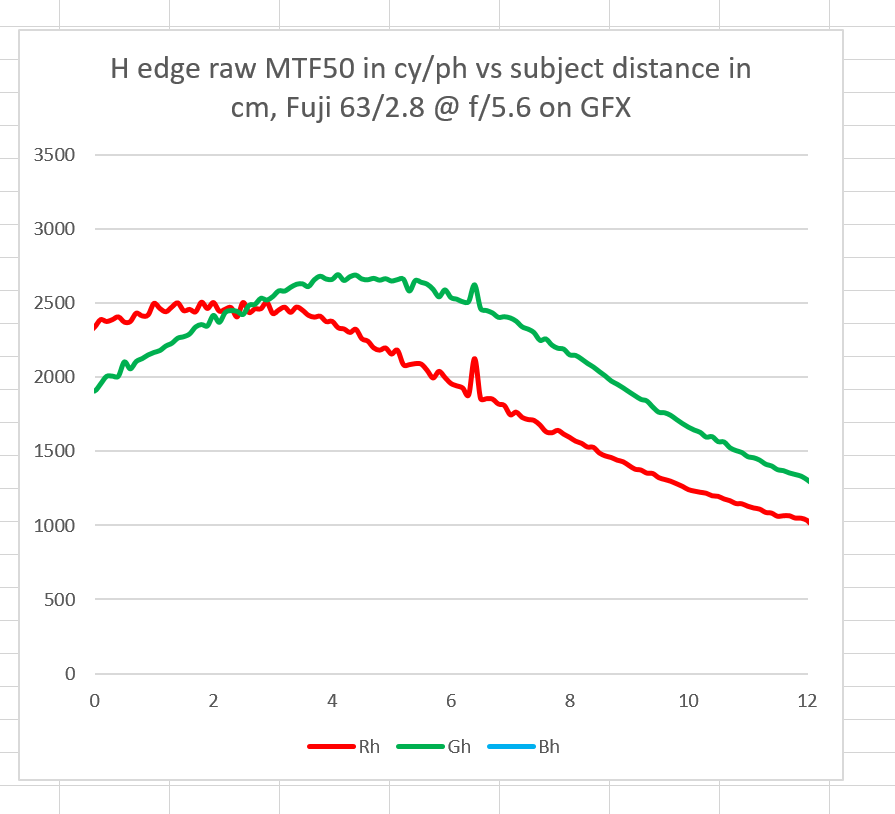
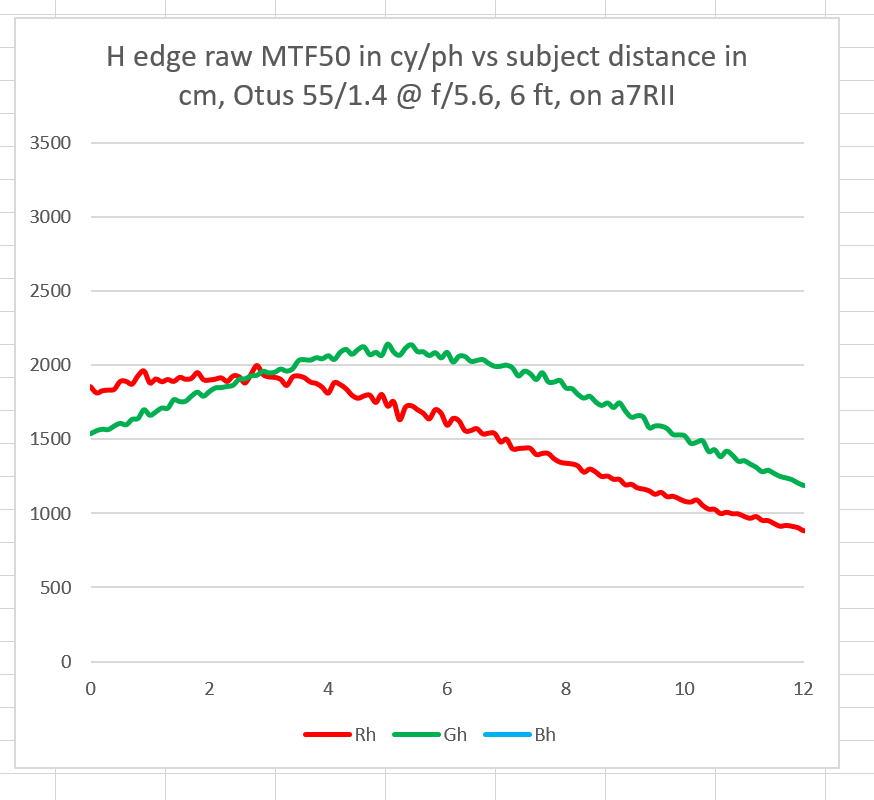
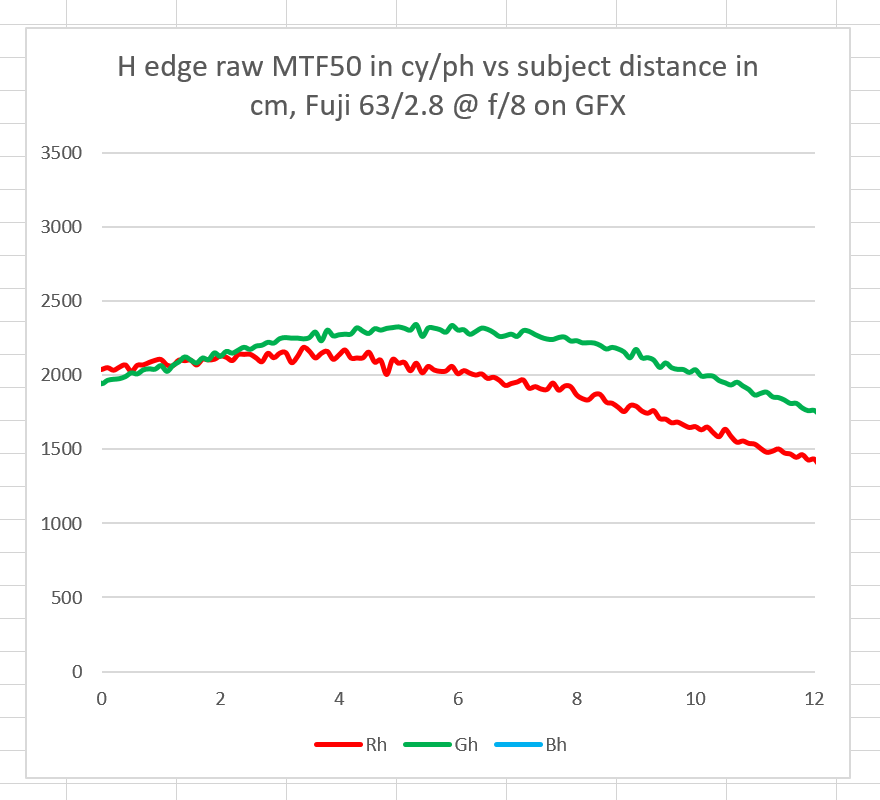

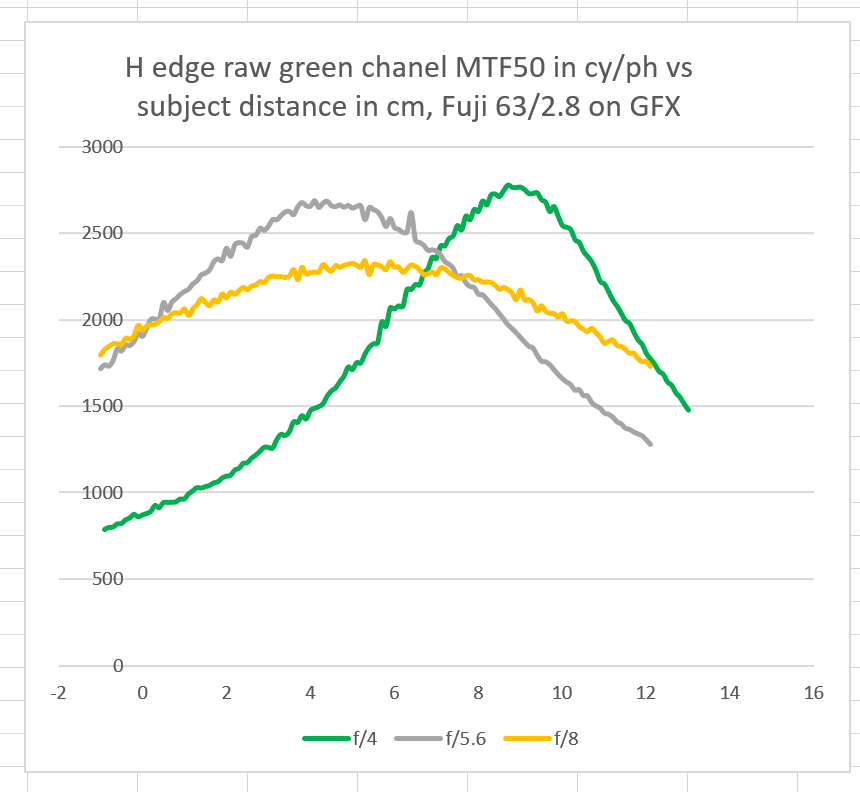
Hi Jim,
Well done. Yes, it is important to know the difference between FF and MF. Of course the GFX has a larger sensor, ergo better detail. GFX sensor is about 40% bigger! But, if you compare sensor from APS-C to FF, then you have 57% bigger! That make a bigger difference!
So, it is marginal to compare FF to MF-Sensor of the GFX.
About lenses: Oh my god. No one is equal on production series. You can test 10 same lenses, you will have 10 different result. Take that in mind!!
Finally the OTUS was made for the 36 MP sensor from Sony for the Nikon D800. Maybe Zeiss has made a little better, that it can resolve with the 45MP sensor.
On the other hand, Fuji built lenses for Hasselblad a long time. So, they have know-how.
From your test, I am a little disappointed from the result of the GFX-lens. It has to be much higher. Now, I know, why Hasselblad has finished the production with Fuji for the X1D. Nittoh do it now. And these lenses are better then Fuji assembled Hasselblad-lenses.
My wish: Body GFX with Nittoh-lenses (X1D). But, it not fit.
I would like to point out that:
1. Zeiss manufactured medium format lenses for Hasselblad too.
2. Otus is very unlikely designed *specifically* for 36MP or 42MP or future 50+MP sensors only. They could very well for future high resolution sensors.
Here are some tests done at 200 lp/mm (https://www.lensrentals.com/blog/2017/07/experiments-for-ultra-high-resolution-camera-sensors/) Otus can accomodate very high MP count sensors and even for 200MP+ FF sensors they’d be marginally adequate (imagine a nifty fifty level image quality, but for pixel peeping at 200MP)
And I think future sensor technology would shift from simply adding pixels of the bayer matrix to improving well depth, switch to Foveon-type sensor for more effective pixel count and sensor-shake technology to take very high MP count still images without requiring extreme optics. So hopefully we won’t be in for a resolution arms race between lens manufacturers.
I did some simulation work several years ago that indicated that on-axis resolution of the Otus 85 wouldn’t start to be seriously lens-limited until the sensor pixel count approached a billion.